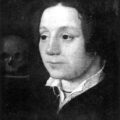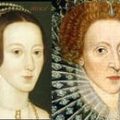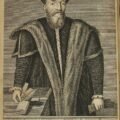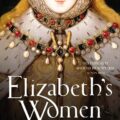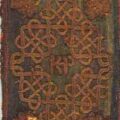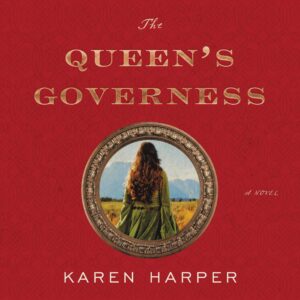
Finding Kat Ashley by Karen Harper
I have been fascinated by the Tudors for years: Elizabeth and her mother Anne are the two most fascinating women I have ever researched, read and written about. As a multi-published historical novelist, I am always looking for new windows into their much-examined lives. I have approached them through a historical novel, The Last Boleyn (focusing on Anne and her sister Mary—published twenty years before Gregory’s The Other Boleyn Girl) and a nine-book The Queen Elizabeth I Mystery Series. But when I realized that, as far as I could tell, no one had yet written an Anne/Elizabeth novel through the viewpoint of Katherine Champernowne Ashley, Elizabeth’s governess and “foster mother,” I realized I had found a real gem of a central character.
Kat Ashley’s time at the Tudor court spans the early years of Anne Boleyn’s premarital residency as “The Lady” through the early years of Elizabeth’s reign. Those years, approximately 1528 – 1565, cover my favorite Tudor years, so deciding to use Kat as the viewpoint character was a real blessing—and then became a real challenge.
First of all, Tudor research, as much as I love it, it always a bit daunting. Dates often vary, consistent spellings are non-existent, and, even though I try to read primary sources, comments on events can be different. I ran into real confusion in trying to discover information about Kat’s early years, because “experts” contradict each other on which family she came from in Devon. After examining numerous family trees, I decided she could not be from the Champernowne branch many sources claim because she wrote a letter to Thomas Cromwell in 1536 which indicated her father was alive—and that did not jive with much of the research. So I linked her to that family, but did not claim they were her own.
Another mystery—how did a woman from rural, distant Devon get to court, get a good education, and why was she seemingly tied to Thomas Cromwell at first? [Sidebar here: I was thrilled to see that Hilary Mantel’s Wolf Hall presents Cromwell much as I interpret him, as he is a key character in this novel.] Research on Cromwell shows that he did visit rural Devon during Kat’s youth to close down a few monasteries for Cardinal Wolsey—one way His Eminence kept his coffers full years before the Dissolution. So, researcher yet fiction writer that I am, Cromwell’s bringing the bright, ambitious Kat to court worked out well and meshed with what was possible, that he met her on this early trip to Devon.
So Kat arrives at the Tudor court during the days Anne Boleyn is first in residence there, the days Anne and Cromwell are working together and King Henry is in hot pursuit of a divorce from Catherine of Aragon. Kat had to know and impress Anne, for in the days before the queen’s fall from power, Anne took a strong hand in who was around her baby daughter. Kat was in a position in little Elizabeth’s household to take over from her first governess, Lady Margaret Bryan, when Bryan was promoted to care for the newborn Prince Edward. So it is certainly obvious that, whether Cromwell or Anne placed Kat in Elizabeth’s household at first, she was there from the early days. When Anne was beheaded, Kat became the child’s only consistent, loyal mother figure. So I see this novel as a mother-daughter story on two levels: Anne’s love for her daughter whom she entrusted to Kat, who became Elizabeth’s ‘mother’ over the years.
Sadly, it is well known that Elizabeth was only three when she lost her doting, clever mother, she of the dark eyes and graceful hands—and no doubt other gifts—the girl inherited. Even after Anne’s execution, the impact of her character permeates my novel, as I believe it did her daughter’s life. Elizabeth was known to always wear a ring with a spring lock which hid her mother’s portrait facing hers inside—a key symbol in my story and an actual piece of jewelry extant today.
Elizabeth’s own writings make clear her affection for Kat and her husband John Ashley, a Boleyn relative, who were with her into her reign and were handsomely rewarded for their long-term service. Kat went to prison twice—once to the Tower—for her loyalty to the Princess Elizabeth. I believe the Ashley union gave Elizabeth one of her few intimate views of a strong, good marriage. As Elizabeth put it once, “We are more bound to them that bringeth us up well than to our parents.”
I like to summarize the relationship between my favorite three Tudor-era women this way, for in The Queen’s Governess, I have Elizabeth say, “Anne Boleyn gave me life, but Kat Ashley gave me love.”

